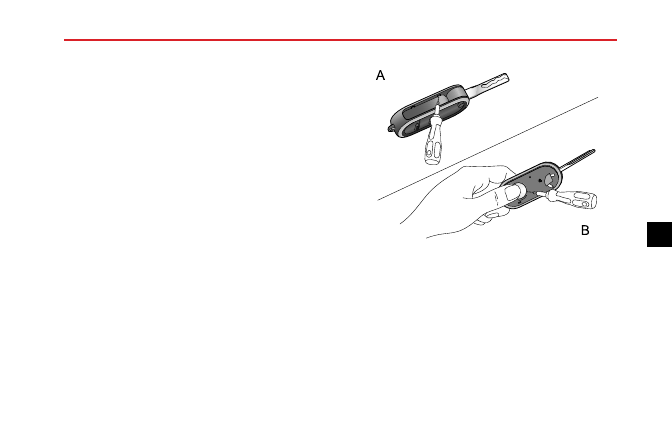MG 316. Service Manual - part 8

STARTING & DRIVING
If your key is lost/stolen or broken, a replacement can
only be obtained from an MG Authorised Repairer. The
lost/stolen key can be deactivated. If the lost key is found,
MG Authorised Repairers can reactivate it.
Note: Replacement keys are only available via MG
Authorised Repairer.
Note:
The new key cannot be offered to you
immediately because it needs some time to match the
new key with the vehicle by MG Authorised Repairer.
Remote Key Battery Removing and Refitting
If the battery needs replacing, the engine immobilisation
warning light in the instrument pack flashes whenever the
remote key is operated (see warning lights and indicators
in Instruments and Controls chapter).
A
B
1 Unfold the remote key.
2 Use a small flat screwdriver to prise out the cap from
the two holes in the key groove(A).
3 Remove waterproof gasket.
4 Press the battery and slide, Insert a small flat
screwdriver to the gap to remove the battery. Pay
attention to the polarity of the battery(B).
113
5